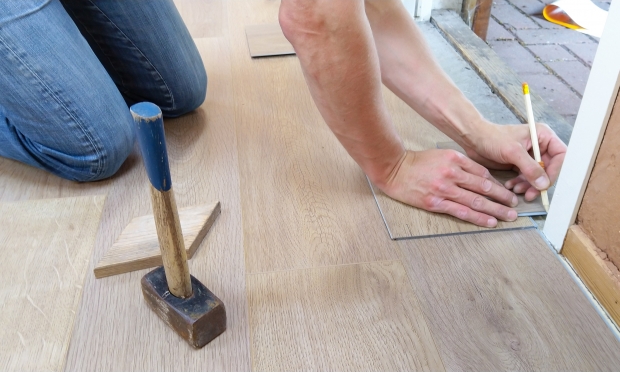There are ways to get your hands on the cash you need to repair your humble abode

That roof is starting to leak. Your basement foundation is showing some troublesome cracks. The furnace doesn’t fire up quickly when you adjust the thermostat and your pothole-pecked driveway has seen better days. Each of these worry spots can come with a costly repair or replacement price tag. So where are you going to get the greenbacks to pay for these priorities? If you lack the savings or emergency funds for a sudden or planned fix-it project, don’t panic: You can likely borrow the money via a number of different options available to homeowners who qualify.
Option #1
A home equity line of credit, or HELOC. This equates to a second mortgage that is secured by using your property as collateral. Instead of getting a lump sum payment upfront, you can use it as a revolving line of credit with an adjustable interest rate (often based on the prime rate), plus a margin. With a HELOC, you borrow only the money you need at the time you need it and start paying it back only when you have a balance owed. Interest doesn’t begin to accrue until you draw down on the line of credit. They can be quicker and easier to secure than other financing options. With these, fewer lending restrictions apply and the interest charged may be tax deductible.
“I used a HELOC to pay for a roofing project I needed done,” says Jake Lizarraga a Baltimore homeowner. “It was relatively easy, and the interest rate is pretty good with fewer closing costs involved. I recommend shopping for a HELOC through a credit union, which can often involve less red tape.”
Option #2
A home equity loan. This option also uses your home equity as collateral, and is considered a second mortgage but with a shorter (for example, five to 15 years) term than your first mortgage. Most home equity loans offer a fixed rate, although adjustable-rate options are available. Like a HELOC, the interest charged may be tax-deductible, but you must start paying off the loan immediately every month.
“This requires borrowing all the money in a lump sum, which may not be best for projects where the costs are incurred in stages. But there is the certainty of a fixed rate and monthly payment,” says Greg McBride, chief financial analyst for New York City-based Bankrate.com.
Option #3
A cash-out refi. This involves refinancing your existing mortgage loan and taking out equity at closing in the form of a lump sum cash payment that you can use for home improvement. You can reset to another fixed-rate loan, usually for anywhere between 10 and 30 years, and take advantage of a typically lower rate than you get with a HELOC or home equity loan. But the closing process can be expensive and lengthy. By resetting your loan, you may be adding extra years to the term until it’s paid off.
Option #4
A personal loan. This can be handy if you’ve not earned enough equity in your home to qualify for options #1–3. A personal loan is an unsecured signature loan that doesn’t require using your home as collateral. It can be relatively easy to qualify for a personal loan. However, you’ll be charged a higher interest rate than you would for the first three options.
“For borrowers with good credit, personal loan rates are competitive, and money can be in your account in a matter of days,” McBride notes. “But you borrow a lump sum and are locked into monthly payments for the term of the loan.”
Option #5
One or more credit cards. Most credit cards charge exorbitant interest rates and aren’t good options for fix-it financing. But some credit cards don’t charge interest for a set period.
“There are credit cards that have 0% APR for 12, 15 and even 18 months. That allows you to knock all or most of the payment out before interest arises,” says Joseph Polakovic, owner/president of Castle West Financial in San Diego. “Let’s say your project cost is $15,000, and you can save $1,000 per month. In this case, opening a new credit card can make sense if you qualify for a $15,000 limit.”
Before committing to any of these choices, “it’s really important to plan the project, get an idea of the costs and think about how you’ll pay back what you borrow before beginning the work,” recommends Matt Hackett, operations manager for Equity Now in New York City. “Waiting until the work has started will limit your options significantly.”
Erik J. Martin, CTW Features